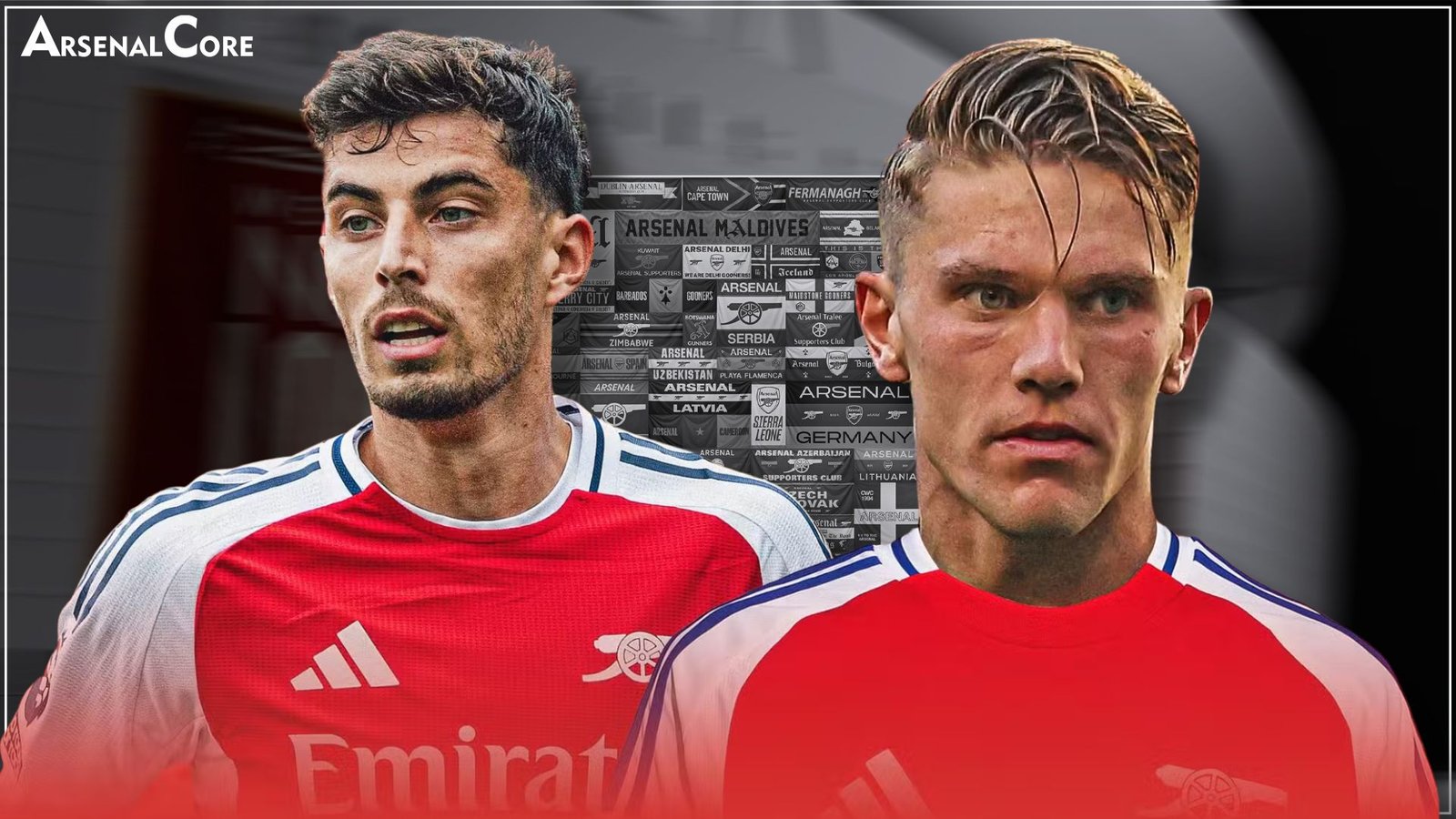With Viktor Gyökeres closing in on a move to Arsenal, a natural question arises: how does he fit alongside Kai Havertz? Both players have been used as centre-forwards in the past year, but their individual profiles and tendencies suggest they can do more than simply rotate. They can coexist, and more importantly, elevate each other’s impact.
Unlike traditional No.9s, neither Havertz nor Gyökeres are static forwards. But that’s where the similarities end. Gyökeres thrives off the left channel. He bullies centre-backs, presses with intensity, and constantly drives towards goal. Havertz, meanwhile, prefers floating into the right half-spaces, combining intricately and arriving late into the box. Their zones of dominance do not clash. They complement.
Havertz’s right-side drift opens space for Gyökeres
In possession, Kai tends to overload the right side, linking with Saka and Ødegaard in tight triangles. That movement leaves vacated central lanes and space in behind the left channel. This is exactly where Gyökeres comes alive. He’s not someone who hugs defenders and waits. He moves diagonally, often starting from the left before surging centrally to shoot or assist.
Now imagine that with Arsenal’s wide options. Saka drawing defenders on the right, Havertz ghosting into pockets, and Gyökeres peeling away into space on the opposite side. It’s a tactical cocktail that offers fluidity and unpredictability. Something Arsenal lacked in several high-stakes games last season.
Underlapping wingers will benefit from their synergy
One of the most underrated effects of this pairing will be on the wingers. Martinelli or Noni Madueke will thrive in this setup. With Gyökeres often dragging full-backs and centre-backs with his runs, it will create underlapping and diagonal sprinting lanes. Arsenal’s wide players will have more space and more varied angles to attack from. Not just hugging the touchline and cutting inside, but arriving between lines at speed.
This tactical stretch: right-side weight through Havertz, left-channel penetration through Gyökeres, can disrupt even the most compact low blocks. Arsenal have often been accused of playing too predictably in the final third. That is about to change.
Author Opinion
Mikel Arteta has always prioritised spatial dynamics and positional flexibility. Gyökeres and Havertz may not seem like the most obvious pairing at first glance, but when you zoom in on their tendencies, it’s clear they offer a dynamic contrast. Not only can they coexist. They might just be the key to unlocking the next evolution of Arsenal’s attack.
MUST READ: This killer striker could be the signing that finally wins Arsenal the Premier League
























